
views
- Pour 1-2 c (185-370 g) of uncooked rice into your blender and blend it on high for 1-2 minutes. Sift the flour through a sieve and then blend the filtered flour again.
- Or, grind 2-3 tbsp (23-35 g) of rice at a time through your coffee grinder’s finest setting. Filter out any coarse pieces and run them through the grinder again.
- Transfer the fine rice flour into an airtight container. Keep it at room temperature for up to 3 months or store it in your fridge or freezer for 1 year.
Using a Blender to Make Rice Flour
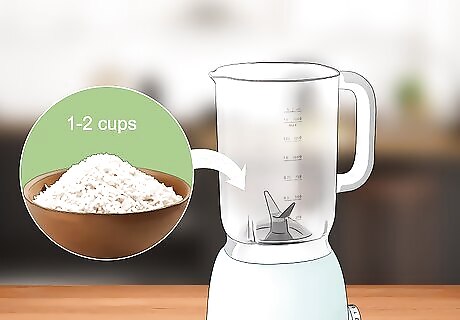
Add 1-2 cups (185-370 g) of uncooked rice to your blender. Use your favorite type of rice to make flour, as white, brown, and glutinous rice (sticky or sweet rice) all work great as flour. Just add 1-2 cups (185-370 g) of uncooked rice to your blender at a time so the rice doesn’t clog your machine. Working with smaller amounts at a time helps the blender work more efficiently and grind the rice into a finer consistency. 1 cup (185 g) of uncooked rice yields about 1 ½ cups (278 g) of rice flour. If you don’t have a blender, use a food processor instead. Optionally, soak your rice in water for 5 minutes to get rid of any dust and debris. Then, spread it on a towel and let it air dry until it’s crunchy. Like white and brown rice, glutinous rice does not contain gluten. White vs. Brown vs. Glutinous Rice Taste: White rice has a mild, neutral taste while brown rice has a slightly nutty and sweet flavor. Glutinous (sticky or sweet) rice has a slightly sweeter taste. Uses: White and brown rice flour are considered all-purpose and are great for breads and baking. Brown rice tends to make denser, heavier baked goods. Glutinous rice is best used as a thickening agent or in Asian dishes like rotis and dosas. Nutrition: Brown rice contains more protein, fiber, and vitamins than white rice. White rice is still a good source of manganese, thiamine, selenium, vitamin B6, phosphorus, and other vitamins. Price: White rice tends to be cheaper than brown rice. Shelf life: White rice flour typically lasts longer than brown rice flour. The oil in brown rice causes it to go bad faster.
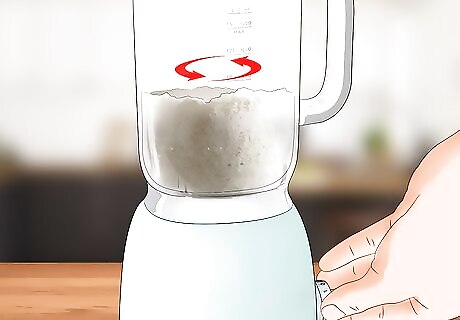
Blend the rice for 1-2 minutes, or until it is a fine powder. Put the lid on your blender and turn it on to its highest setting. Simply blend the rice for about 1 to 2 minutes, or until it’s turned into a fine powder and has a mostly uniform consistency. If your blender stars to feel hot, turn it off and let it cool down for several minutes before blending more rice. Blending the rice very finely helps it combine with other ingredients. Coarse rice flour can make recipes come out textured and inconsistent. If you plan on making a lot of rice flour, invest in a high-quality blender. Blending rice is hard on your blender's blades.
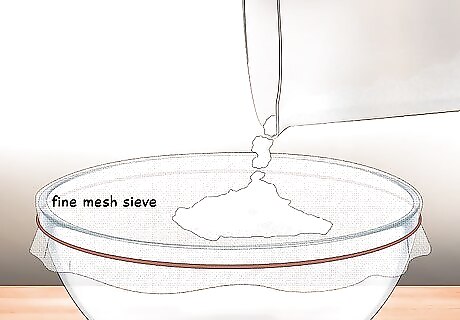
Sift the flour through a fine mesh sieve. To ensure all of your rice is finely blended, pour the flour in the blender through a fine mesh sieve and into a separate bowl. This filters out any unblended rice pieces or large chunks of powder.
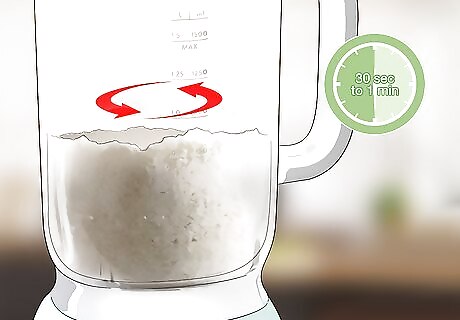
Blend the filtered flour for 30 seconds to 1 minute. Pour the large chunks of rice in the mesh sieve back into the blender. Then, grind the rice for an additional 30 seconds to 1 minute until the rice has a fine powdery consistency.
Making Rice Flour with a Coffee Grinder

Add 2-3 tbsp (23-35 g) of uncooked rice into the coffee grinder. Coffee grinders also blend rice into a fine consistency, just like blenders and food processors. Just measure out the total amount of uncooked rice you want to blend. Then, add 2-3 tbsp (23-35 g) of uncooked rice to the grinder at a time. This prevents your coffee grinder from getting clogged or overheated. Clean your coffee grinder before you add the rice so it doesn’t take on a coffee flavor. Just use a small brush or spatula to wipe out the grounds.

Grind the rice on your coffee grinder’s finest setting. Set your coffee grinder to its finest grind setting and then turn it on. Wait for the coffee grinder to stop, then transfer the fine rice flour into a separate container. If your coffee grinder starts getting hot, unplug it and let it cool down for a few minutes. Then, continue grinding the rice.

Sift the rice flour through a fine sieve and re-grind any coarse chunks. When all your rice is ground into a fine powder, pour it through a fine mesh sieve and into a new bowl. Then, run the unblended and coarse rice in the sieve back through the coffee grinder. This ensures that all of your rice is blended into a fine, uniform consistency.
Using a Grain Mill to Make Rice Flour
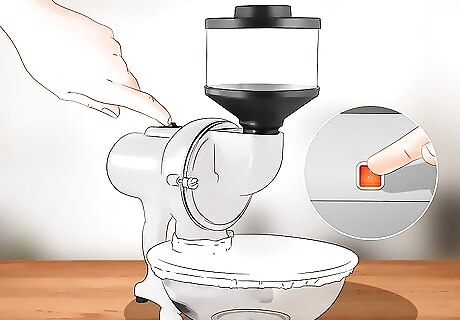
Turn the mill to its finest setting and then power it on. Most grain milling machines have several settings that grind ingredients into fine and coarse consistencies. Just set your machine to its finest setting, which might be labeled “Fine,” or “Pastry.” Then, flip the grain mill’s power switch to turn it on.
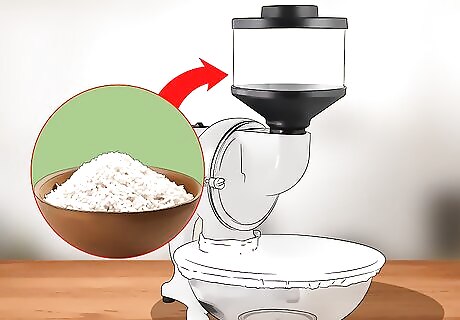
Pour 1-2 cups (185-370 g) of uncooked rice into the hopper. Add the uncooked rice directly into the hopper. As it passes through the hopper, it is automatically ground into a fine powder and deposited into the attached canister. If any rice gets caught in the hopper, use a spoon to push the rice down into the grinder. Most grain mills make a high-pitched sound when it's finished grinding the rice. Let the mill run for an extra 5 seconds after it’s finished grinding to make sure no stray pieces of rice are lodged inside.
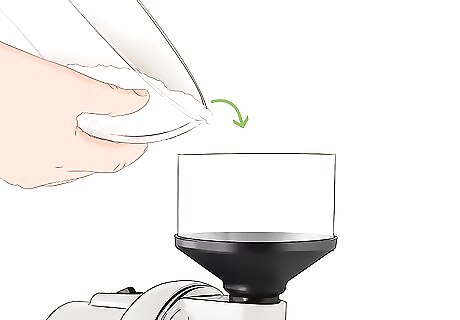
Run the rice flour through the mill again for a finer consistency. Turn off the mill and transfer the flour from the canister into a bowl. Hook the canister back into the mill, turn the mill on, and pour the rice flour back into the hopper. Running the flour through the mill a second time grinds it up even finer for a more consistent texture. Use a spoon or spatula to push the flour through the grinder, if necessary. Turn off the grain mill once it’s finished grinding the flour.
Storing Rice Flour
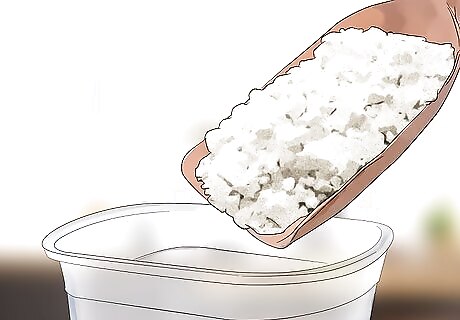
Let the flour cool, then transfer it into an airtight container. Grinding rice into flour generates heat, whether you’re using a blender, food processor, coffee grinder, or grain mill. So, let the flour cool down to room temperature. Then, pour the flour into a glass or plastic storage container or jar that has an airtight lid. Label your container with the date you made the flour as well as what type of rice you used. This keeps track of how old the flour is and when it might go bad. Alternatively, seal the rice flour in a plastic bag. Just squeeze out any excess air before you close it. Exposing the flour to air can cause it to spoil faster.
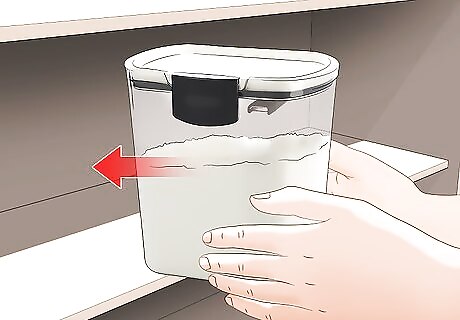
Store the rice flour at room temperature for up to 3 months. Rice flour keeps well at room temperature if you plan on using it up soon. Just place your airtight container in your pantry, cabinet, or another dry, cool spot. It’ll stay fresh for about 3 months. If your rice flour starts to smell off or rotten, or you see mold growing, throw it away.
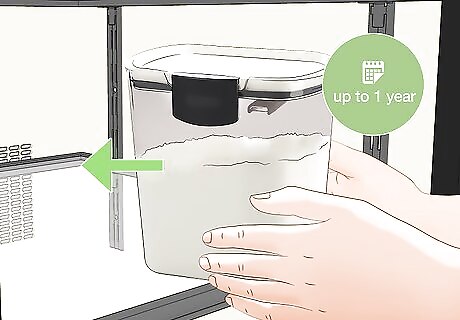
Keep the rice flour in the fridge or freezer for up to 1 year. If you need your rice flour to last longer, simply stick it in your refrigerator or freezer. The cool temperatures help preserve the flour and keep it fresh for up to 1 year.
















Comments
0 comment